The idea of collecting energy from the sky – and using it in our homes to nurture, our schools to educate, our industry to build – is really the stuff of science fiction. As Arthur C Clarke once said,
Any sufficiently advanced technology is indistinguishable from magic.
NovaSolix proposes a carbon nanotube based solar module which has the theoretical potential to reach 90% efficiency. The technology is based on a 1960s invention – the rectifying antenna (rectenna) – which is today used in radio frequency identification (RFID) tags. RFID tags capture the radio waves put out by scanners and power themselves. NovaSolix aims to take that ability of converting a different portion (non-visible) of the electromagnetic spectrum, and – using carbon nanotubes tuned to the sun’s full spectrum output – collect a much broader portion of the energy in our environment.
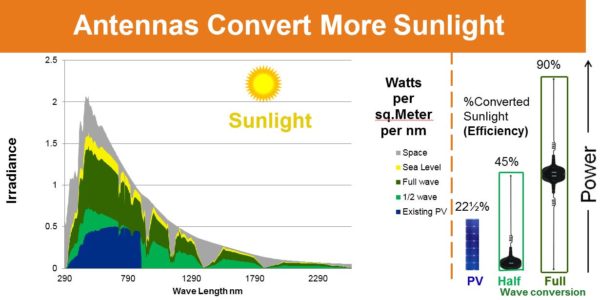
NovaSolix isn’t first to come up with this idea. Dr. Brian Willis, of the University of Connecticut, was pushing toward this technique in 2013 when he was proclaimed for a fabrication process called selective area atomic layer deposition that could allow for the manufacturing of the carbon nanotubes. At the time, commenting on solar rectennas in general, Willis was quoted as saying,
I compare it to the days when televisions relied on rabbit ear antennas for reception. Everything was a static blur until you moved the antenna around and saw the ghost of an image. Then you kept moving it around until the image was clearer. That’s what we’re looking for, that ghost of an image.
When asked by pv magazine how NovaSolix was growing its carbon nanotubes (still a future idea in this author’s mind), Dr. Jyotsna Iyer first let me know that carbon nanotubes aren’t a future idea anymore They’ve been grown since the 1990s in a ‘serious fashion’. Paraphrasing a thought of hers, was that science fiction had long moved to science speculation, and under her supervision in the NovaSolix labs, into science manufacturing.
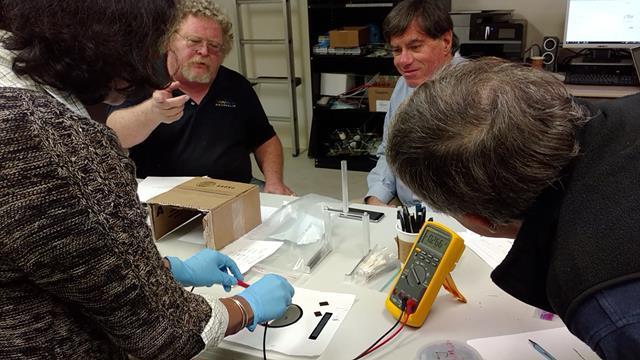
The company says they’ve demonstrated a proof of concept, in front of third parties, that has touched 43% efficiency. That’d suggest a 72 cell solar module near 860 watts, with a 90% solar cell pushing 1700 watts.
CEO Rich Preston spoke of the challenges of raising money in the solar industry, as the company is seeking early stage financing so they can produce the first product that will be submitted to NREL for testing. Having myself just finished reading Varun Sivaram’s Taming the Sun, and hearing how Sivaram watched his father’s Silicon Valley company lose out to the Chinese solar revolution, it becomes clearer the challenges of being in Preston’s chair.
And don’t expect this harsh reality to ease. Just last week, Bloomberg reported that Wind and Solar got so Cheap other Green Ideas were Left Behind, and Jenny Chase was quoted as saying that the overall early stage investor attitude was,
With solar and wind so cheap, why should you bother with anything else?
NanoSolix suggests you’d do it because – in addition to absorbing almost all of the electromagnetic spectrum – they’ll be far cheaper. The base materials are aluminum, copper, glass, nickel and carbon. The hardware can be manufactured on the same manufacturing lines that make flat panel computers and tvs. In fact, the company thinks they could buy used manufacturing hardware and retrofit them in the early stages of growth. The first manufacturing lines could cost $4.1 million, and would initially produce ~45% efficient modules, at a clip of 20MW/year with a proposed price of 10¢/W. At full efficiency, costs are cut in half and volumes per year doubled.

And with this the company suggests they’ll be ale to deliver electricity as low as 0.3¢/kWh.
Look again at that number. Recently, Lazard released a report extolling how new wind and solar power were cheaper to build than to run some already built coal and gas. Their beautiful charts showed wind peaking just below 2¢/kWh and utility scale solar around 4¢/W – unsubsidized. When California finalized its rooftop mandate – pv magazine suggested residential electricity at an effective price of 2.5¢/kWh. Amazing numbers!
NovaSolix wants to undercut the most competitive electricity on earth by a factor of ten.
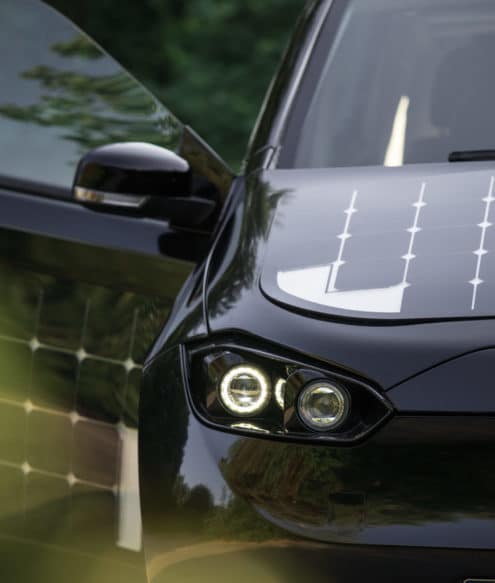
NovaSolix’s path to market is much like many of the new solar technologies – start in industries that need a high efficiency product and can deal with the higher price while the company scales. Satellites and drones are two regulars on this list, and more recently cars have joined it.
Sono Motors suggests its car charge up just over 18 miles on a 24% efficient solar cell. If NovaSolix can get to that 90% number, that’s 67 miles of sunlight driving. The average daily miles driven in the USA is about 40 miles per person. Elon Musk – are you reading?
As readers of pv magazine know well, this author is absolutely enthralled with the possibilities that comes from technology and research in the solar industry –
- Solar windows providing 40% of the US’ electricity
- Solar panel theoretical efficiency limit increased by 33%
- 12 hours 0f energy storage enough for US to run on 80% wind+solar
And like so many other ideas, if the sales pitch is real, if the scientists can deliver, if the hypothesis can move to theory – and the theory become applicable in a scalable, manufacturable good – then all the rules change.
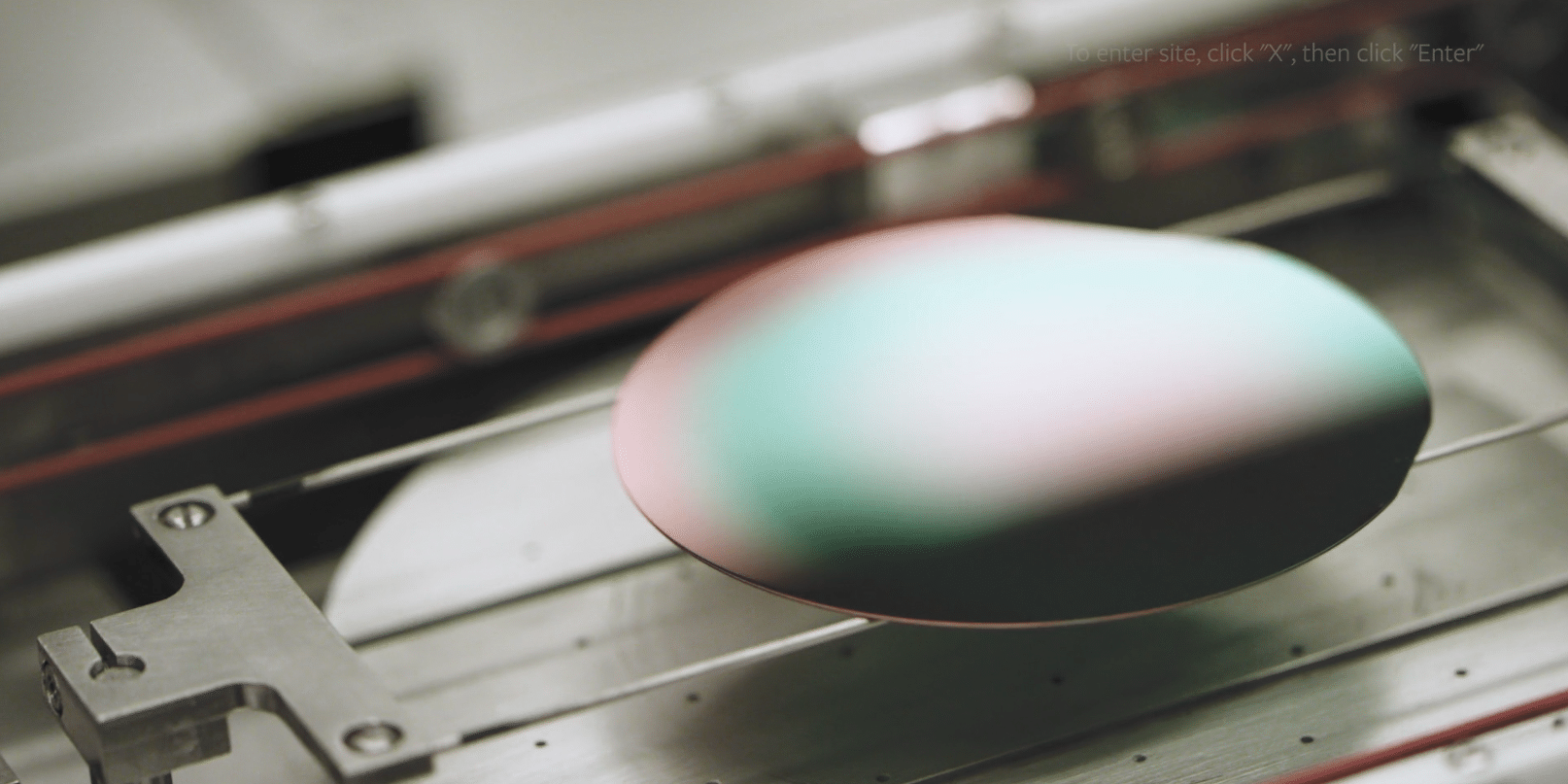
Will NovaSolix be successful? That’s not to be known just yet, that’s not how reality works. As many prior, very intelligent and hard working firms have learned, the solar industry of the 2010’s has taken no prisoners.
But we can all taste it, we all know we’re not at the end of the technology advancement road. As Dr. Willis stated,
Theoretically we know it is possible, but we won’t know for sure until we make and test this device.
This content is protected by copyright and may not be reused. If you want to cooperate with us and would like to reuse some of our content, please contact: editors@pv-magazine.com.
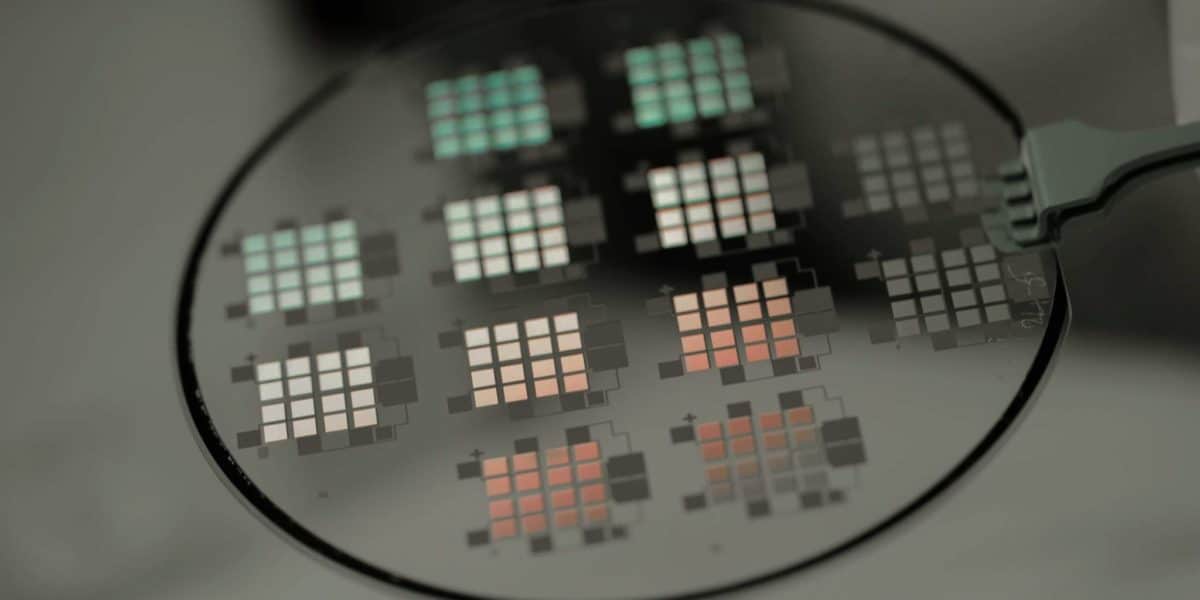







I would be happy with 860W panels – 6 panels for 5kW system vs somewhere around 15-20 panels for current systems. Yes, please.
8 hour summer day, 40 degree latitude 600 Watts per sq. meter
So over this 8 hour day one receives:
8 hours x 600 watts per sq. m = 4800 watt-hours per sq. m which equals 4.8 kilowatt hours per sq. m
This is equivalent to 0.13 gallons of gasoline Somebody needs to go back to basic math class
@jeff schw
Let’s use your numbers to do the math:
– 4.8kWh per square meter
– Sono says 7.5 sq meter solar surface on the car
– Sonos says 24% efficiency
So that gives 8.6kWh of stored solar power per day.
Sono also says the car requires 14kWh to go 100km, or 4.4mi/kWh.
So the 8.6 kWh from your calcs gives a range of 8.6*4.4 = 38mi from solar energy stored per day. That’s about double what was quoted in this article, which could come from any number of sources of inaccuracy in my estimate. I’m going to go with the quoted solar array size being the entire surface area, and not the effective area (since some of the panels are vertical on sides and back of the car), and that the effecitve are is more like 3.5 or 4 square meters.
In any case, this is quite embarrassing for you.
The estimation of mileage comes from Sono. I provided a link.
I was replying to jeffschw, who claimed that his estimate is incident solar energy and simple math showed that the estimate was wrong.
I was re-deriving the estimate of range, by going through the rest of the calculations he skipped (and had in place used the red herring of the energy content of gasoline).
I wasn’t disputing anything for the article or Something, I was confirming it.
Enough electricity to power the entire United States can already be generated using a small corner of Texas. 40% efficient would be about double current commercial panels; 80% would be 4x (or 1/4 of the land requirement).
If they pull this off we will truly be looking at almost every building being self-sufficient for energy.
To JoeC – you don’t get 8 hours of power from an 8 hour day, you only get about half of that (there are charts providing average daily insolation) unless you use tracking tech to follow the sun (keep the panels pointed directly at it). In Arizona about 1kw of energy falls on every square meter of land at noon; 80% efficient would be 800w * 4.5 hrs (Arizona does a bit better than average) would be 3.6Kwh per square meter per day collected. 10 square meters would be enough for many homes given enough battery backup.
@Bill
Obviously.
The starting starting point provided by jeffSchw was 4.8kWh per day of incident solar energy. That’s less than 10% different than your estimate. I’m not sure what you’re quibbling with.
Please show me any car with 7.5 meters of surface area pointing within 5 percent of directly at the sun…. I use and run with solar and solar thermal and based on real world experience . It would be wonderful if their claims were true but sadly I do not see much potential for cost reduction. Also nobody included storage losses Line loses conversion losses atmospheric losses water vapor losses dust and particulates losses on surfaces and in the air…need I go on?
@jeffschw:
I showed you that using your numbers, the 7.5 sq m of panels would produce _double_ the power per day that Sono’s website shows. There’s plenty of margin in there to account for the fact that not all the panels directly face the sun, for various losses, etc.
You claimed that “basic math” would disprove their numbers. So put up or shut up. You do the math, and do it correctly, and show that their numbers are as ludicrous as you suggested. We’ll check behind you.
@joec half of the car will be in shade and none of the panels directly face the sun. So your calculations are correct if the car was a flat sheet always facing the sun
@Nearc
How is it that every idiot feels compelled to reply, yet won’t actually read the thread?
All I was doing was pointing out that @jeff schw had completely screwed up his analysis. He claimed that “basic math” would show Sono’s range estimates to be ludicrous, yet he didn’t complete that basic math, he went off on some tangent about the energy stored from the panels vs the energy content of gasoline. He didn’t ever actually explain what he was thinking, but I’m guessing he forgot that a gasoline engine can only turn a fraction of that energy into useful work.
In any case, doing the “simple math” from the numbers he provided yielded a potential range that’s even longer than what Sono quoted, meaning he was obviously wrong. The range from simple math is about double what Sono claimed in their literature.
Whether the input numbers jeff schw provided were right, I can’t say. But they appear to be reasonable, and appear to take into account the reduced insolation of fixed (non-tracking) panels.
AND since they produce twice the necessary range claimed by Sono, they neatly suggest that Sono did in fact account for the effective area of their panels being less than the total sufrace area since not all the panels are pointing straight up, and/or for efficiency losses.
I am skeptical. The solar rectenna was proposed in the 1980s, but analysis of the physics showed some fundamental problems.
1. If each antenna element is a dipole with 75-0hm impedance the voltage developed in full sunlight would be microvolts, far less than the forward voltage drop of the diode that would try to rectify it.
2. Antennas are efficient only at their resonant wavelengths, but the bulk of the solar spectrum covers from about 0.4 to 1 micron, more than a factor of 2.
3. conductors do not function at optical frequencies as they do for RF. Are we confident that the rectenna would work at all like the rectennas used for radio frequencies?
I challenge the promoters of this “invention” to extract their slide rules from their rectums and show us the rigorous physics and calculations.
We’d love a hardcore analysis of it, as I’m not physicist
Let’s, “go fund me”.
90% efficiency.
Drive a car without plugging in.
If this is real, count me in.
Wow! This author has a double set of Rose Color Lens on his eyes and expectations. I can’t figure out if he already has stock in this start-up company or is just their fund raiser? Hey John, how about a pair of anti-grav shoes to go with this fantasy?
I don’t even know where to take the glasses off. Science fiction is beautiful.
Says the fossil power industry
http://zebu.uoregon.edu/disted/ph162/l4.html
someone needs to go back to school.
the author does not even know that at ground level the max is 1000 watts per sq meter meh
Solar modules are ~two square meters
Yep, I also felt like I was reading an infomercial script. Pleasantly, he does finish with a caveat.
50% would be astonishing. 90% must be an out right lie.
Why? Did you not come up with the vision ? Are you into some other process, that will deliver less? It is called being a visionary.
Prepare to be astounded. 48% is already commercially available for niche applications.
I like some skepticism, but sometimes it gets to the point where these so called skeptic people are acting like the church that were trying to hold progress back by saying geocentrism is the true nature of the universe because the bible says so. Fortunately heliocentrism won. These damn skeptics are skeptics of everything that goes against mainstream academic belief, but not against mainstream academic belief itself. We got to where we are now because people made discoveries against current dogma. Our ancestors might not of had the technology we have, but I think they were superior to us. Of course an oligarchic elite that monopolize and control things is what’s holding us back now.
It has been know for years that antennas can be very efficient–especially very small ones and ours are the smallest ever built–less than 2 microns
Article (2010) below cites 97% efficient microwave antennas.
It’s just a different technology than current PV and will dominate over the coming decades.
https://www.mwrf.com/components/small-antennas-are-big-efficiency
At least 3 different parties have come up with similar theoretical efficiencies
This is all great stuff. But first step go buy 20% solar panels available right now put to them on your roof. This will save you money and let you be niceer to the environment. Then get an electric car once the entire world is on 100% electricity and most transportation is electric then we can look into this and other “just around the corner great wonderful things”. In other words stop waiting do it now, with what we have.
Very interesting. I had heard of work like this on thermal radiation (10 to 20 microns). IR antennas wouldn’t need to be as small as visible light antennas. Presumably you could exploit the thermal radiation from the ground to the sky -at night. That in itself would be really cool. But if you can take the near IR and visible as well, then that is pretty astounding.
So the real question is can it actually be done? And can it be done cheaply? And how long will the panels last? It could be great. Or it could be a complete bust.
Current panels are just pushing 20%. So you’d like a 4500% increase, in a month.
Why bother, turn on your cold fusion reactor instead!
You mean a 350% increase. Not sure where you got the “month” part from.
Hi all.
There’s no substitute for physical size when it comes to antennas. Sure, you can be very efficient at capturing a tiny amount of energy in a tiny portion of the spectrum, but to be efficient at producing useful product, you need size.
Also, antennas are very efficient at the portion of the spectrum their tuned spectrum and their efficiency drops off as we move outside their bandwidth. A multi-band, multi-element antenna would improve efficiency.
A solar cell can be made very efficient by having multiple tuned antennas to capture a wide range of the energy spectrum. But then, they can’t be small; relatively speaking.
I’d love to see this happen. I’m not seeing the mass production of carbon nanotubes that the company seems to think is a done deal. And price-is-no-object applications like satellites also require proven reliability.
Dr. Betts 2008 talked of III IV multi junction @ 60%
I wonder if attenuation can be countered by charged particles in vacuum, directing the nanotubes.
Lumeloid does not use semiconductor principles to generate electricity, but exploits the same techniques radio antennae use to absorb radio waves; except that Lumeloid absorbs nano-scale visible light waves, in a process which in part mimics photosynthesis. The linear light polarizing molecules in the film act as the antennae to absorb the energy of a resolved component of photons incident on the film. With a 80-90% efficiency and has been around for 40 years, for originator look up Dr Alvin marks
There are many examples of advancements that were swept under the rug. All, because of the economic impact that releasing the new tech on the industry would have. In 1983 I was doing handyman work in a house in Desert Hot Springs. I noticed a lawn mower with a engine that defied what most of us know of internal combustion engines. I resembled a rotary engine, but the fuel was water and peroxide. Of course I was intrigued, mostly because the guy who was having the work done didn’t meet my idea of an inventor, or engineer. A mechanic very possibly. He explained that his dad, who had passed away was a police officer and left a chest for him. In the chest was the designs to build this engine. To cut to the chase, he put it back together and started it up and off it went. There wasn’t anything around or below it, only the vise securing it. Then came the real surprise. He had a car with a bigger version installed. He turned the key and it started right up! He allowed me to take photos of the lawnmower engine, but not the car engine. Then he paid me and asked to leave he had to get on the road before dark. That was the last I saw him, however I heard he headed north toward LA. So, water works, if you mix with rocket fuel, like peroxide. Some of us are too quick to make assumptions because they didn’t come up with the idea first and it goes against what they were taught. If nothing else, remember this, if you study and learn in a box, you will build boxes. Check out the guy who discovered how to cure cancer. He realized this little detail early on.
this stuff blows up
“That’d suggest a 72 cell solar module near 860 watts”
Useless comment without specifying A SIZE.
72 cell is the size
Utility sized 72 cell PV panels, made using silicon wafers, are approximately 39″ x 78″. This includes space for a 6 x 12 array of cells, each about 6″ square, space between them, and the aluminum frame they are enclosed in. For comparison, residential panels are 60 cells arranged in a 6 x 10 array with dimensions of approximately 39″ x 65″.
“PALO ALTO, CA–(Marketwired – April 05, 2017) – NovaSolix today announced the NovaSolix Solar Antenna technology, a disruptive technology enabling solar energy to expand beyond the inherent limitations of photo-voltaic (PV) cells”
Note the date on the above excerpt from a yahoo article. Sheesh!!!! How about some up to date stuff PV.
It was new knowledge to me. Was it new to you?
Is there any theoretical calculation on the efficiency of Rectenna?
They are arguing simply that the efficiency of rectenna solar cells will be 90% because the efficiency of a rectenna at microwave frequencies is 90%. But this is not the case.
The laws of physics limit its efficiency.
1. Random polarization of sunlight
The photons from the sun (thermal light) are randomly polarized. So you can lose 50% of sunlight because the direction of antennas is fixed. You can image the polarized sunglasses.
2. Broad solar spectrum
The sunlight spectrum ranges from UV to IR. However, the size of antenna is fixed. Physics tells the size of antenna is the half of the wavelength of electromagnetic waves. So the Rectenna
could absorb only the narrow spectrum of sun spectrum.
3. Electrons cannot follow the direction of electric field of the photon, because they have
a finite mass. Unlike the microwaves, electrons cannot follow quickly the change in electric fields at optical frequencies. In order to accelerate the electron, it takes some time due to the finite mass of electrons. Wiki (https://en.wikipedia.org/wiki/Drude_mode) shows a nice animation how electrons response to an AC electric field for different frequencies.
Please think about the reason why the clock speed of CPU in your PC is about 3GHz, not 100 THz.
The reality is that the efficiency of Rectenna at optical ranges is very very low.
yes but no
1) A conducting antenna that is 1/4 the size of the wavelength of the EM radiation, or has a resonant frequency equal to the frequency of the EM radiation will be very efficient. Nanotubes can be tuned to the same frequency as light.
2) The fact that sunlight has a spread of wavelengths can be dealt with by having a distribution of different nanotubes in the material tuned to a matching spread of wavelengths (same idea behind a multi junction solar cell).
3) The fact that polarization is random can be dealt with by having an array of nanotubes in the material in different orientations.
Combining 1,2,3 IN THEORY could result in a solar cell approaching 100% efficiency.
Also it doesn’t have to be just a solar cell, it could absorb infrared radiation as well an get an additional boost by converting heat to electricity.
All of this, however, is IN THEORY!
IN PRACTICE:
1) Can you cheaply make the damn thing? This has not been demonstrated.
2) Will it last 25 years? A roof in full sunlight is a really harsh environment! UV light, heat and oxygen wreak havoc with materials, especially photosensitive materials. There have been a number of great ideas, printable solar cells, solar cells that mimic the photosynthetic processes of plants (this latter idea would be great if said solar cells could produce hydrogen or even better hydrocarbons directly!) that have failed because they just don’t last very long.
Dear erf,
You may arrange all size nanotubes in all direction.
Then how do you connect them?
Also you didn’t mention how to make a diode operating at optical ranges.
It looks like Ambit Technology has already done this a while ago. http://www.nanotech-now.com/news.cgi?story_id=15038
I need a 860 watt solar panel running at 60 VDC.
When will it arrive on Amazon.com?
2019?
2020??
It used to be whispered that these type technologies were just actively suppressed. With the advent of major tech firms like Apple and Tesla and Google now vested in energy it’s difficult to make that sell anymore.
So that leads one to wonder, if these type gains were out there, just ready for a few million bucks of manufacturing startup, why hasn’t one of these major players made that leap? Tesla spends ten times that much each year in charging costs. Seems like it’d be a sound investment for them.
Yet they don’t. Why? Because claims like these are nothing short of pie in the sky money grabs. Get rich quick, fold under your investors and retire a con-artist. That at least seems to be the most logical conclusion.
Theranos Solar?
There is another process that uses GOLD to reflect the energy back into a substrate that collects the energy increasing solar efficiency to over 80% This is a micro layer of gold Very close to the substrate and is actually cheaper to make than current silicon cells. Either way brains are breaking the 50% efficiency barrier, and that is the point where solar becomes far more energy efficient than any other method of production of energy. Investors take note, do not bury your heads in the sand and lose a fortune as in past new tech revelations. Think electric and earn green.
you put it on the market I’ll buy it if it does what you say I’ll invest in the company.
I will volunteer me and my leaf and Bolt to test it out. I have test equipment and background to know what I’m doing.
I am an early pioneer in evs and I think this would be the best thing since sliced bread. As only one application.
I’d prefer some super cheap, light, large capacity battery that charges fast. We still need air conditioner in tropic area at night and it burns through electricity when solar panel becomes useless.
90% efficient is thermodynamically impossible. 68% is the thermodynamic limit and 86% is the limit if you use a concentrator cell. Here is the scientific paper that proves it.
Detailed balance limit of the efficiency of tandem solar cells
A De Vos 1980 J. Phys. D: Appl. Phys. 13 839
https://doi.org/10.1088/0022-3727/13/5/018
I believe Idaho National Labs – without carbon nano-tubes – discovered the nano-antenna has a top efficiency of 80% oh a bit over a decade ago. In all actuality, if all energy sources and sinks are properly taken into effect, natural systems are 100% efficient, just not in doing the work we want them to do. Semiconductor technology, the discovery of graphine and even entanglement are far past 1980. In the (early) 1970’s we thought the relationship between energy growth and economic growth were linear. The introduction of conservation combined with investments in renewable energy production have far outpaced economic growth without it.
If the study of economics were evaluated on similar metrics to what science and engineering use to determine “efficiency”, especially if quality of life – putting roofs over people’s heads, clothes on their backs, food in their bellies and meaning to life, our economies are becoming less and less efficient. Many societies did just that until we monetized them.
California’s old policy of paying residential customers at the residential rate for up to 99kW of power was destroyed by Dick Cheney in 2005, the same year “homesteading” was no longer protection against losing one’s home in bankruptcy and student loans were no longer something that could be dismissed in bankruptcy.
Had the provisions of the Warren-Alquist not been negated by the Federal Government overreach, advancements in solar efficiencies would create true financial incentives for every California homeowner to have as much solar potential as their service would carry. To maximize profits, each home would have incentives to conserve energy as well. US manufacturing would be trying to approach or exceed the 80% predictions of energy efficiency. People would have this extra money in their pockets to spend on education, vacations, retirement and simply helping prop up the economy in a downturn. After an earthquakes and other disasters the unaffected homes can help those in trouble, increasing the overall resiliency of society.
Addictions sell. Solutions don’t. Ultra-high efficiency solar electricity is a stepping stone to global sustainability. Other than powering the technologies we use in our lives, the electricity can be used to power bio-fuel manufacturing (Dr. Craig J Venter), agricultural waste catalyst to fuel conversion such as Cool Planet, bio-digesters at landfills and sewage treatment plants, refinery sized Reversible Methanol Fuel Cells (Dr. George A Olah) and other fuel based “Carbon Sequestration” methods that have not even been imagined.
Reduction in producing greenhouse gasses – whether released as CO2, Methane, refrigerants or other heat trapping effluent from our activities will not save the planet from over 600 years of industrialization, population growth and the philosophy that having and consuming more is better. Only rapid carbon sequestration as fuel offers any solution that broadens hope for our future.
Industrializing such processes will fill our gas tanks with renewable fuels that don’t require we dig up fragile ecosystems or establish conflict zones to exploit natural dwindling resources. The economic effects of manufacturing fuel rather than extracting crude from Earth’s belly will continuously reduce fuel prices yet reduce Global Warming. Internal combustion engine technology has advanced to the point they can actually clean the air. Our fuel distribution network is extremely efficient compared with the monopolistic tendencies of our sprawling central electric grids.
Taxes for War for Oil is a conspiracy of stupidity. Imagine a world where countries that are net consumers become producers and existing producers become worthless. War as a means of political and economic power could essentially melt away faster than the polar ice caps.
This technology is wonderful and should be pursued to a much greater extent than it is now for all the benefits I site above. The older I get, the more surprised I find that we let naysayers repeat half truths to sell us more “stuff” we don’t need while we miss the big picture on what we really need.
Dale said it all!
It’s been a year? Will there be an update article? Love the vision and the lofty objectives. Getting half way there would be huge.
Just imagine what even 75% much less 90% could do for something like an electric powered glider plane. You could easily manage cross-country flights at very good speed. I hope they reach this potential and have it on the market in less than 15 years. Hopefully battery technology will increase along with it. There’s so much potential combining the two with flight, speed & distance with something like a glider.
Derek,
Just to let you know that what I am doing with solar panels is going to open up a brand new highway in the sky for radio telecommunications.
Just by the use of one 72 segment Solar Panel instead of the typical Photo Diode my signal gain has increased 1000 % .
Yes that is right we are using the solar panel technology as Radio receiving antennas and wow they are performing.
Now we are using Radio signals inside of the Infrared beams.
This seriously is growing each day in the development and is being closely studied in my lab.
NO this is NOT some SCAM or CRAZY Idea.
Just look on line and you will see that the Chinese are crudely trying to get theirs to work.
Well I have already got mine working quite successfully no thanks to China.
I have been toying around with this since the early 1960 ‘s .
Well Now it is here to stay.
This whole discussion reminds me of the movie of Charles Lindbergh staring James Stewart .There’s a sean where Charles is on a train sitting across from a salesman .The salesman asks Charles what he does.When Charles says he flies airplanes the salesman protests and says that’s impossible.Air can’t hold up anything. Then the salesman points to his suspenders and says , now these can hold things up !
Please, how far has Sono gone now in Year 2020?
Thank you.
Please, how far has NovaSolix gone now in Year 2020?
Thank you.
This whole discussion reminds me of the movie of Charles Lindbergh staring James Stewart .There’s a sean where Charles is on a train sitting across from a salesman .The salesman asks Charles what he does.When Charles says he flies airplanes the salesman protests and says that’s impossible.Air can’t hold up anything. Then the salesman points to his suspenders and says , now these can hold things up !
Thanks for finally writing about > All I want for Christmas
is a 90% efficient solar panel – pv magazine USA < Liked it!
It’s 2021. More and more money is pouring into solar research. The amount of solar power installed has been consistently underestimated by everyone. Greenpeace got closest and even they underestimated it.
If that continues, and the learning curve (how much it drops with every doubling of installation) continues at the same rate, or even half the rate, then we are going to see solar amazingly cheap by…2030? 2040?
Professor Martin Green, from the University of NSW (recognised as one of if not the, leading solar researcher of the last 20 years), is confident that solar costs will halve in the next few years, and it won’t be long after that that people will start to have tens of Kw’s of solar panels on their roofs. Considering half the solar cells in the world have technology his team invented, I’d be prepared to bet that he’s going to be right…
Does anyone really believe that with trillions of dollars of profits at stake, that by 2050, the cheapest solar cells will be at least 40% efficient, and cost less than 1c a watt? That’s 29 years of innovation and competition. In a world where technological progress is not linear, but exponential.
Then again, maybe a whole new source of super abundant cheap energy that we can’t even conceive of yet could be discovered before then and solar will be “old news”.
Who knows? All guesswork.